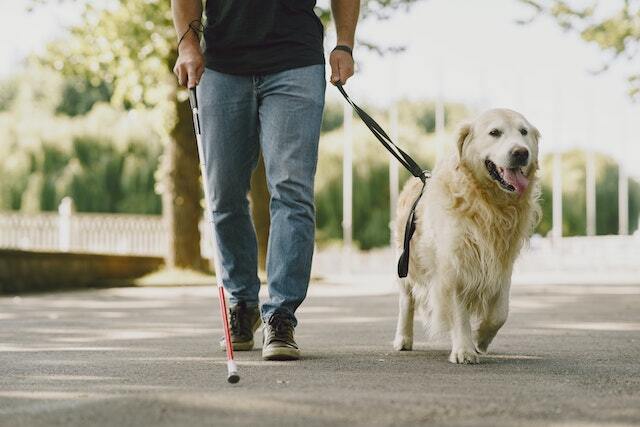The Benefits of Renting to Tenants with Pets

Renting to tenants with pets can be risky or profitable, depending on how you do it.
Before deciding on whether to allow or not to allow pets into your property, do your due diligence first. Specifically, you’ll need to weigh the impact and determine whether it’ll be worthwhile to your bottom line.
In today’s blog, we’ll walk you through the advantages and disadvantages of welcoming pets in your rental space. Keep reading to learn more!
Advantages of Allowing Pets into Your Rental Property
If you allow tenants to move into your property with their furry friends, the following are some benefits you could enjoy.
Charge More Rent
Pet owners spend more on their pets. In addition to the regular pet expenses they spend on, they may also have the money to pay for a pet fee, deposit, or a recurring pet rent. As a landlord, that can be an extra income stream for you.
That said, make sure to abide by all applicable state and local landlord-tenant laws. Luckily for you, in a state like Colorado, landlords can collect additional pet deposits. The maximum amount a landlord can collect is capped at $300.
Another option available to Colorado landlords is charging a pet rent. This can be in addition to the pet deposit, and can be up to $35 a month or 1.5% of the monthly rent, whichever is greater.

You can’t, however, require pet deposits or pet rents for service dogs or emotional support animals. This is because they are working animals and not pets as per the Federal Fair Housing Act (FHA) and the Americans with Disability Act (ADA).
Rent to Happy Tenants
Pets can be great stress relievers, no doubt. Research backs this; it shows that pets can help reduce stress, anxiety, and depression.
Allowing tenants to have pets can help them become happy. And happy tenants are a happy you! Happy tenants are more likely to renew their lease, take good care of their premises, make timely rent payments, and all of this helps you retain tenants in the long run.
Large Prospective Tenant Pool
This is one more reason why allowing pets into your rental property can be advantageous to your bottom line. Allowing pets into your rental property can help you attract a large prospective tenant pool.
And having a large prospective tenant pool can maximize your chances of landing your dream tenant.
Recent statistics estimate that pet owners in the US account for about 68% of all households. This is more than two-thirds of American households!
More Responsible Tenants
Sure, owning and caring for a pet can be a rewarding experience. That said, it comes with great responsibility and commitment. Among other things, a pet owner has to handle vet visits and regular exercises. Not to mention the feeding.

By conducting thorough tenant screening and renting to such a responsible person, you can also trust that they will translate that level of care to the property, too.
Disadvantages of Allowing Pets into Your Rental Property
Pets are great companions for people, whether it’s a cat, dog, bird, hamster, or fish. But the reality is that they can also bring stress and trade-offs. Luckily, these can be managed by putting in place the right contingency plans.
The following are some of the issues you might encounter by allowing pets into your rental property.
Risk of Property Damage
Of course, this goes without saying! Renting to a tenant with pets can mean expecting a certain degree of damage. They can include the following:
- Scratching and chewing. Dogs and cats can scratch walls, doors, woodwork, and furniture.
- Carpet damage. Pets can stain, tear, and soil carpets.
- Damage to walls and doors. Clawing and scratching can leave unsightly marks.
- Urine and feces. This is usually a major concern. Urine can cause difficult-to-remove odors and stains on carpets, padding, and even subfloors.
Noise Complaints
Animals will always be animals no matter how well they are tamed or trained. By allowing tenants to live with their furry friends in your property, you can expect to get increased noise complaints from neighbors.

If the unit is in an apartment complex, you may also get complaints from downstairs tenants about pets running around.
Risk of Injuries
This is also another possible reality if you choose to allow pets into your rental property. Pet insurance can help in such cases, as injuries can occur when an animal is undisciplined, threatened, or triggered somehow.
And as a landlord, you have a duty to maintain a safe environment for both tenants and visitors. To meet safety standards, you must address known dangers, such as a dangerous pet. Failing to do so may be considered negligent, and you could have a case to answer!
How to Address Issues When Allowing Pets into Your Rental Property
Luckily for you, if you choose to allow pets into your rental property, there are certain things you can do to mitigate against the potential issues. The following are some of the things you could do.
- Comply with the Fair Housing Act. This is especially true when it comes to dealing with disabled tenants. They are entitled to having an assistance animal regardless of the pet policy a landlord may have.
- Draft a proper lease agreement. Ensure you draft a detailed rental agreement that contains all important pet-related terms. Let a prospective tenant know about things like the number, breed, and size of pet you allow, among other things.
- Hire a property management company. This is almost always the best mitigation strategy against potential issues when it comes to landlording.
Bottom Line
Due diligence is key to becoming a successful landlord. If you choose to allow pets, make sure to have a solid pet policy in place to safeguard your investment. And if you don’t allow them, make sure to make yourself clear to the tenant.
For further help in this regard, look no further than Whole Property Management. We are your one stop shop for all your rental property management needs. Get in touch to learn more!
